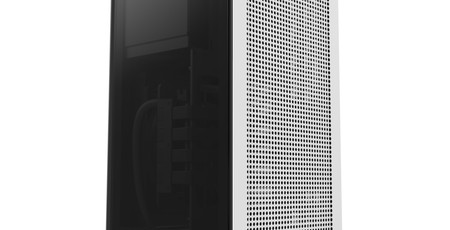
Manufacturer: NZXT
UK price (as reviewed): £299.99
US price (as reviewed): $349.99
NZXT has only offered a handful of sub-ATX cases in its history and old timers out there will probably remember the likes of the Rogue and Vulcan, with the former sprouting numerous interesting mini-ITX case mods. Recently, mini-ITX has seen a bit of a resurgence, but long gone are the downsized micro-ATX towers. We're seeing mini-ITX at its best, with manufacturers forced to come up with new designs and the H1 is set to take its place in that line-up. It looks stunning in person, but whether you should actually buy one is an entirely different matter.
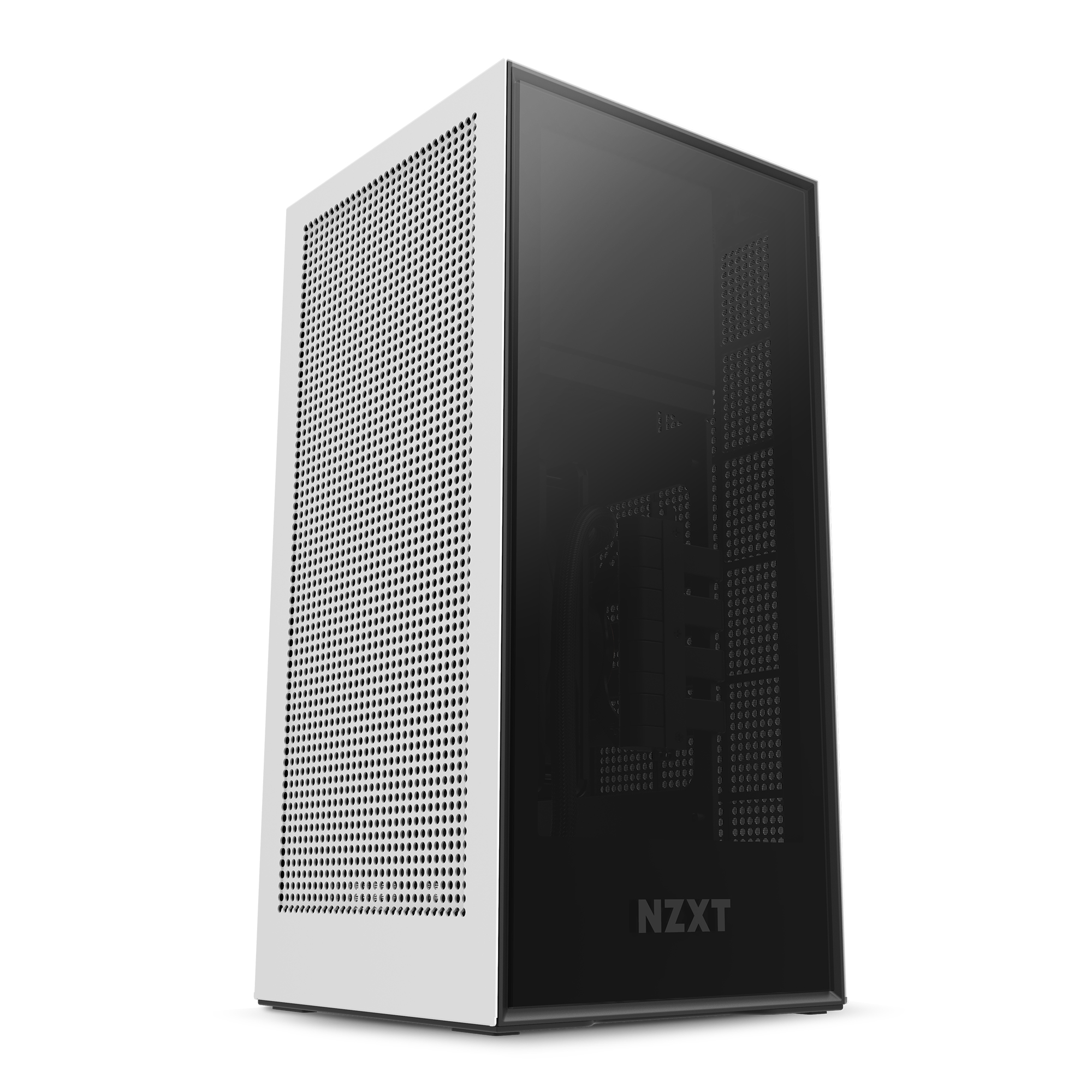
The main issue is the price. At £300, it's an expensive mini beast, but that's thanks to the added R&D that goes into a case like this. NZXT won't sell nearly as many as the mainstream H500-series cases, either. However, that's actually only a small part of the price tag. The main reasons are the fact that NZXT includes a 140mm AIO liquid cooler as well as a 650W SFX-L PSU. There are no plans to ship a vacant case, so for now this is the only SKU. If you're already a mini-ITX fan then you may well already have an SFX PSU, but the cooler is included out of necessity.
There's a small gap between the CPU and side panel - less than 100mm - and given it's entirely possible to power a 16- or even 18-core CPU system inside the H1 these days, NZXT has maximised the use of space with the AIO cooler. With no option for expanding the cooling further and only that single 140mm fan mount, we think it's justified in its choice here.
As you can see above, the chassis is sandwiched between a trio of external panels, with one of these being glass, another a mesh, and a large U-shape twin mesh with holes in the roof that fit over the power button, USB 3.0, USB 3.1 Type-C port and single audio port. The separate side panels pop into place and are quite stiff to remove, but in a sturdy kind of way. The glass panel resides over the outer edge of the graphics card so that any LEDs, such as those on GeForce RTX cards, shine through. However, this undoubtedly does have an impact on cooling, since the CPU cooler and open GPU coolers will vent air both towards the mesh side panel and glass one, failing to exhaust out the latter.
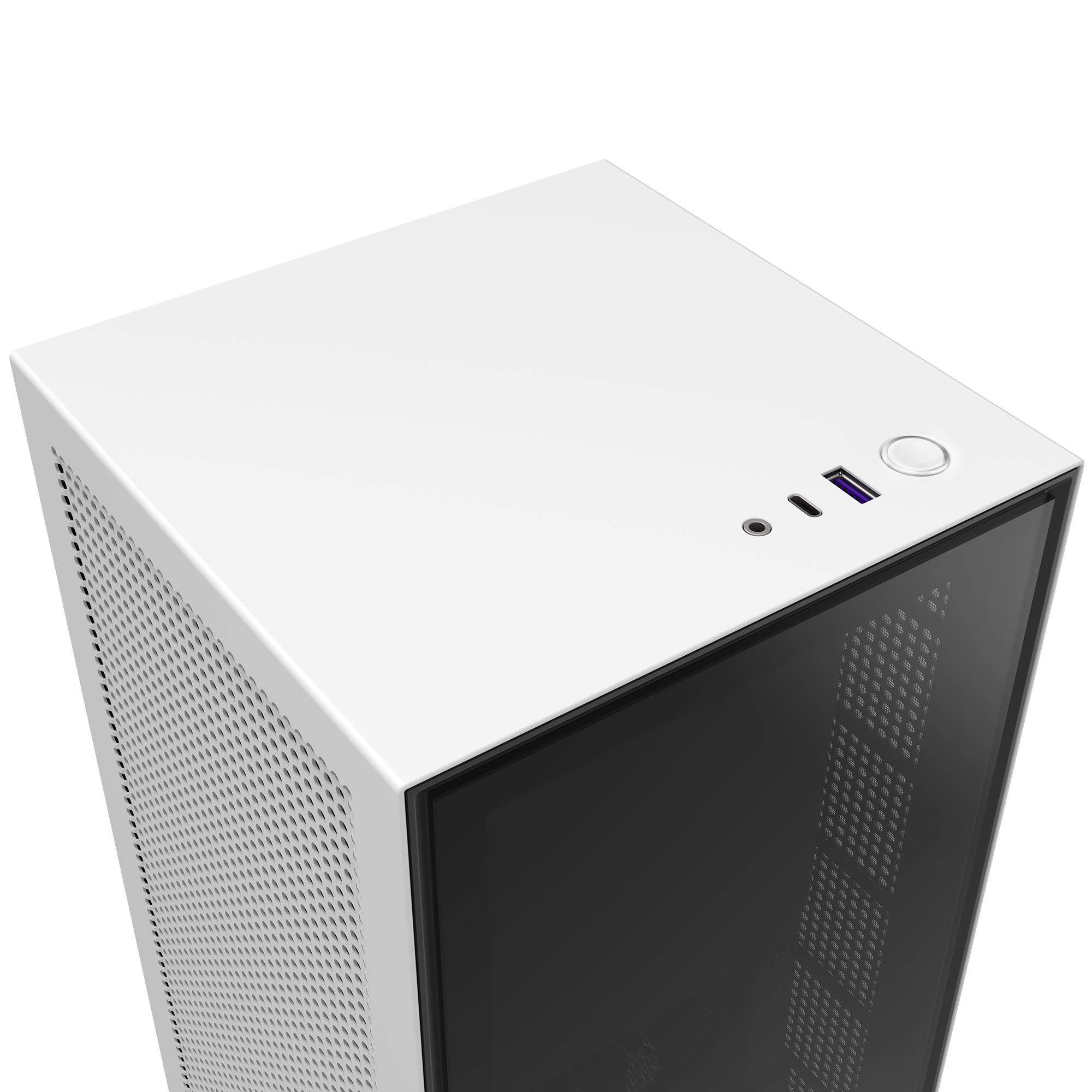
Every cable is pre-installed and neatly routed around the chassis so there's zero tidying to be done, although some were a little tight. You get enough for the maximum hardware you can install into the case, which include two 6/8-pin PCIe power connectors, a single 8-pin CPU connector, 24-pin ATX connector and a pair of SATA power connectors. There's an extra set of PCIe connectors tucked away in case you fancy using something particularly monstrous, although the maximum length is only 305mm so these connectors are maybe just useful as spares. The graphics card hooks up to your motherboard using a PCIe riser cable, which as you'd expect given the price, is included and pre-installed.
Specifications
- Dimensions (mm) 187 x 187 x 305 (W x D x H)
- Material Steel, tempered glass
- Available colours Black, white
- Weight 6.53kg
- Front panel Power, 2 x USB 3.0, 1 x USB 3.1 Type-C, headphone, microphone
- Drive bays 2 x 2.5"
- Form factor(s) Mini-ITX
- Cooling 1 x 140mm AIO liquid cooler with 1 x 140mm fan
- CPU cooler clearance 100mm
- Maximum graphics card length 305mm
- Extras PCIe riser cable, 650W SFX-L PSU, audio jack splitter

MSI MPG Velox 100R Chassis Review
October 14 2021 | 15:04


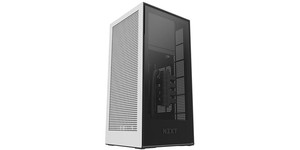
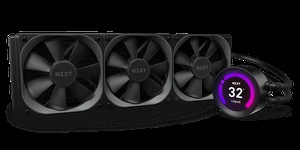




Want to comment? Please log in.